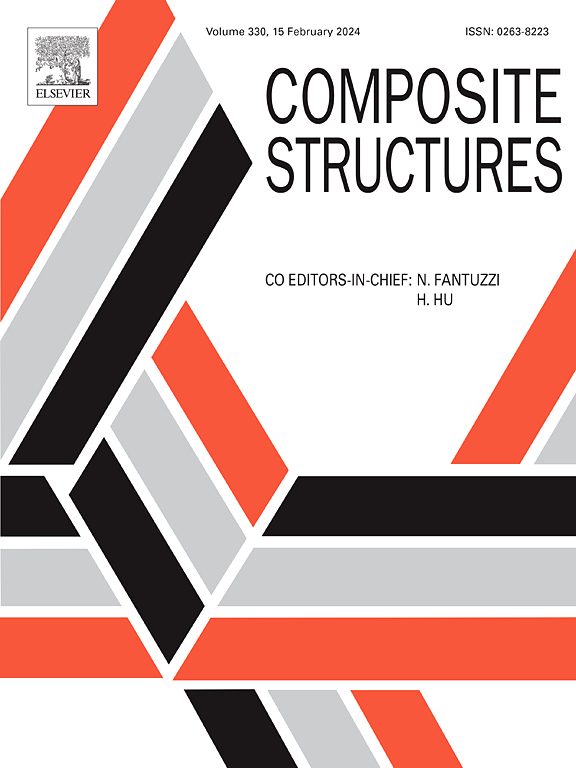Simplified model for the tool-part interaction in spring-in of L-shape composite laminates
IF 6.3
2区 材料科学
Q1 MATERIALS SCIENCE, COMPOSITES
引用次数: 0
Abstract
Manufacturing of fibre-reinforced composites is often accompanied by process-induced distortions, primarily due to the anisotropy of the composites constituents (fibres and matrix), their thermo-chemical interactions, and the interaction between the composite and the tooling. Numerical models that account for these factors require extensive experimental material and process characterisation programmes before the models can be effectively used at the design stage. This paper presents experimental measurements of spring-in angles of L-shape IM7/8552 laminates cured on an aluminium mould. The curing process for L-shape laminates was simulated using the Cure Hardening Instantaneously Linear Elastic model. Tool-part interaction was characterised by fitting an analytical model to experimental measurements of warpage of flat laminates and modelled using boundary conditions designed to avoid the need for explicit modelling of the tooling. The spring-in angles predicted by the proposed simulation framework were within of the experimental results for the range of geometries considered. The simulations provided insights into the effects of specimen design (corner radius, flange length, and lay-up) as well as tool-part interaction on the total spring-in angle. It was shown that tool-part interaction significantly contributes to the spring-in angle, particularly in specimens with larger flange lengths.
求助全文
约1分钟内获得全文
求助全文
来源期刊

Composite Structures
工程技术-材料科学:复合
CiteScore
12.00
自引率
12.70%
发文量
1246
审稿时长
78 days
期刊介绍:
The past few decades have seen outstanding advances in the use of composite materials in structural applications. There can be little doubt that, within engineering circles, composites have revolutionised traditional design concepts and made possible an unparalleled range of new and exciting possibilities as viable materials for construction. Composite Structures, an International Journal, disseminates knowledge between users, manufacturers, designers and researchers involved in structures or structural components manufactured using composite materials.
The journal publishes papers which contribute to knowledge in the use of composite materials in engineering structures. Papers deal with design, research and development studies, experimental investigations, theoretical analysis and fabrication techniques relevant to the application of composites in load-bearing components for assemblies, ranging from individual components such as plates and shells to complete composite structures.
 求助内容:
求助内容: 应助结果提醒方式:
应助结果提醒方式:


